
"I perceive a Bösendorfer to be much more than merely a fine piano, but rather the ideal personification of Viennese musical culture. It is no coincidence that precisely this piano evolved in the city of Vienna, which has exerted an irresistible attraction to musical heroes from time immemorial, even to this very day."
Wilhelm Backhaus
From humble beginnings nearly two centuries ago as just one of Vienna's multitude of piano makers, Bösendorfer has become the world's most revered. This is the story of Bösendorfer...
Ignaz Bösendorfer was born in 1794 in Vienna, the heart of Europe's musical world, as a son of master carpenter Jakob Bösendorfer and his wife Martha.
At the age of 19, young Ignaz began his apprenticeship with Joseph Brodmann (1763 - 1848), one of the most famous piano makers of the time. Bösendorfer was highly gifted as a piano artisan - in 1815, he received an award from the Viennese Academy of Arts. This is all the more remarkable given the number of highly-renowned piano builders in Vienna (including Nanette and Johann Andreas Streicher, Johann Schantz, Anton Walter, Conrad Graf and Michael Schweighofer).
Gaining invaluable knowledge, understanding and skill during his apprenticeship, Ignaz Bösendorfer succeeded his former master as owner of the Joseph Brodmann firm, on Brodman's retirement at the age of 65 in 1828.
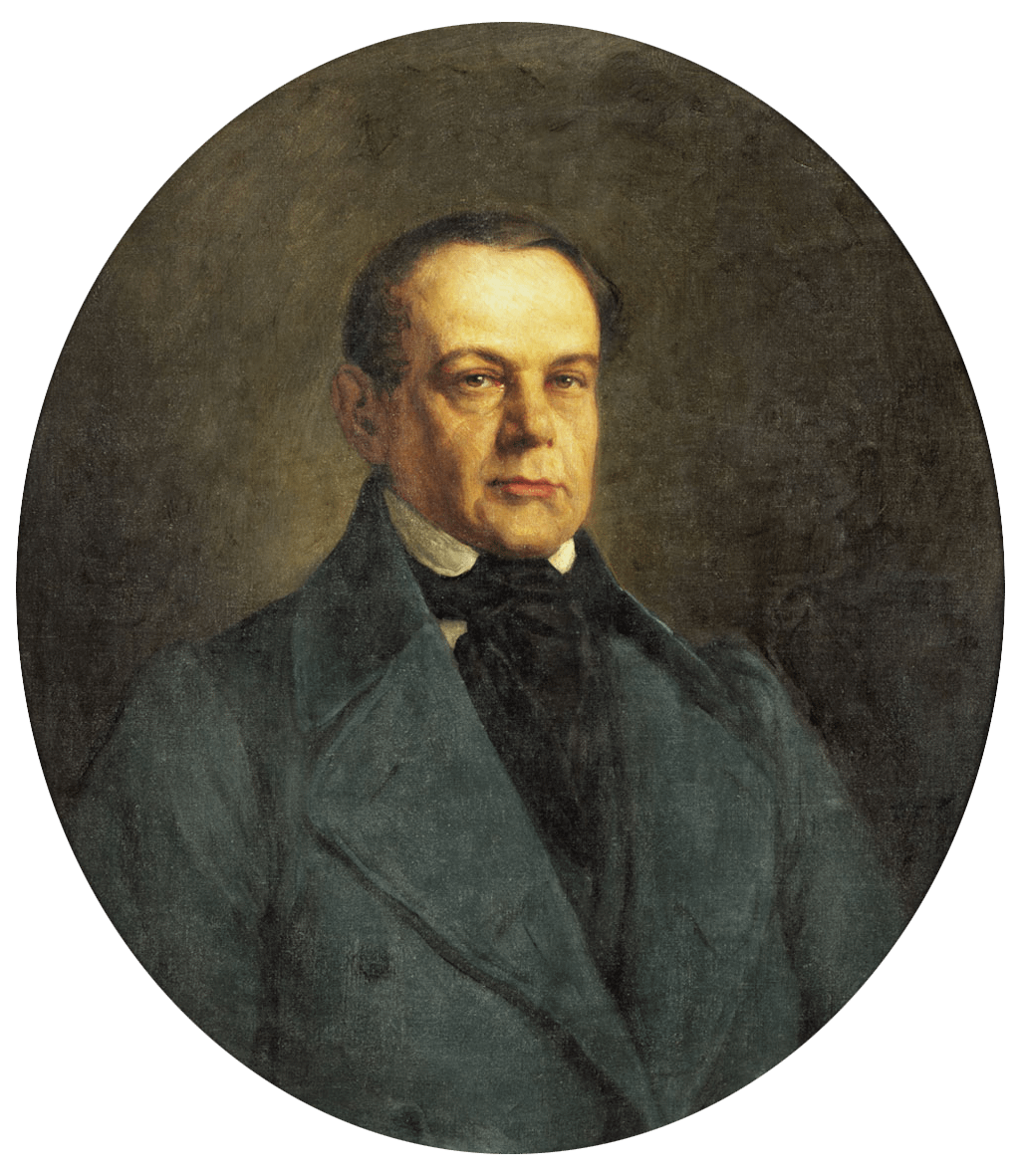
Ignaz Bösendorfer, founder of the Bösendorfer piano company
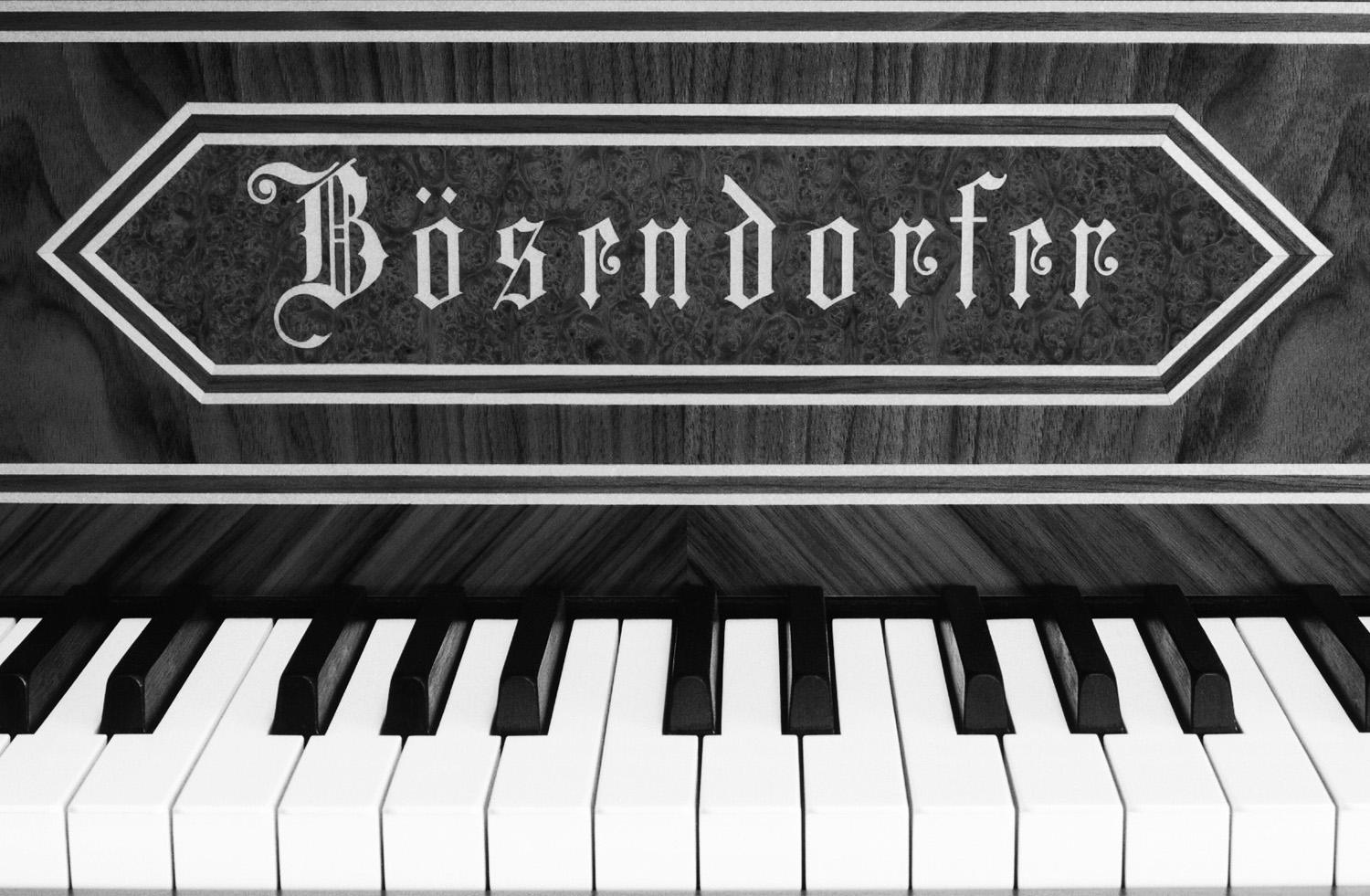
The current Bösendorfer emblem, based on Ignaz Bösendorfer's original branding
1828 saw Vienna and the wider musical world shaken by the death of master composer Franz Schubert, later buried next to Beethoven.
But for Ignaz Bösendorfer, 1828 was a historic year for a happier reason. On 25th July, Bösendorfer was officially accepted into and granted the rights and privileges of the prestigious Austrian Instrument Manufacturers Guild in Vienna.
This is now regarded as the official founding date of the Bösendorfer piano making company - today, Austria's sole remaining piano maker.
At the start, Ignaz Bösendorfer invested a significant sum of 500 Gulden in his new company. On his death 30 years later, Ignaz left his son Ludwig the Bösendorfer piano company - now worth 145,000 Gulden.
"The perfection of a Bösendorfer exceeds my wildest expectations"
Franz Liszt (1811 - 1886)
By 1838, it was already well known that few pianos could withstand the passionate, virtuoso performances of super-star composer and artist Franz Liszt - more often than not, a Liszt concert would leave the piano with near-irreparable damage.
On a recommendation from friends, Liszt selected a Bösendorfer Grand for a concert in Vienna. Thanks to the superb crafting and high quality of the Bösendorfer piano, Liszt found, much to his delight and suprise, that he no longer needed to curtail his artistic spirit. With both artist and audience thrilled by the combination of pianist and piano, Bösendorfer became famous overnight and a close friendship between Liszt and Bösendorfer developed as Liszt continued to choose Bösendorfer for his performances.
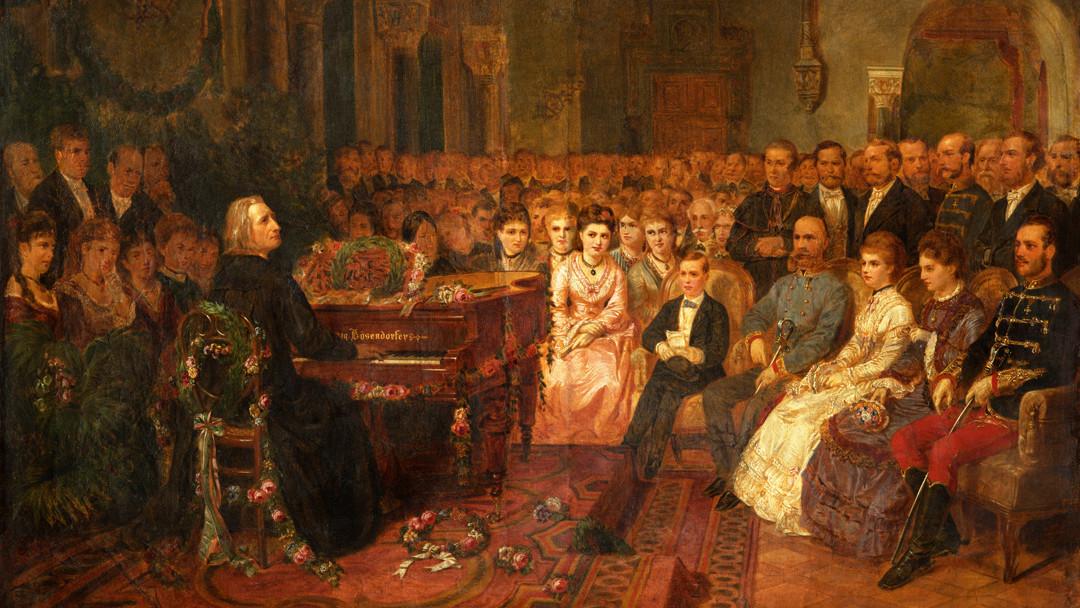
A night to be remembered: The young virtuoso Franz Liszt, famous for his passionate performances, uses a Bösendorfer grand for the first time.
Generally, pianos of the early 1800s - the period of 'Viennese Biedermeier' - were neither designed nor thought of as performance instruments for the stage, but instead as devices for light entertainment at home. With the surpression imposed by the Imperial government over its citizens at the time, social events took place behind closed doors, in the form of private salons and gatherings; exclusive events held as homage to local artists and composers provide amusement to the upper classes.
The most famous of these events were the 'Schubertiades' – named for composer Franz Schubert. The piano became a key part of these salons, providing music and entertainment. As a result, there was an astonishing number of different piano makers of varying skill in Vienna - nearly 400 according to some counts.
Bösendorfer benefited greatly from this form of entertainment. In its founding year of 1828, Ignaz Bösendorfer handcrafted just four pianos of exceptional quality. Extraordinarily, in just 7 years, demand for Bösendorfer had brought production to a total of two-hundred instruments by 1835.
In recognition of Bösendorfer's quality and growing size, in 1839 Emperor Ferdinand I of Austria awarded Ignaz Bösendorfer the official title of 'Imperial and Royal Piano Purveyor to the Court' – the first piano craftsman ever to be granted this honour. Numerous gold medals and first prizes for piano craftsmanship would follow, including the title of 'Chamber Purveyor to the Emperor' given by Ferdinand I's successor, Emperor Franz Josef I.
Perhaps spurred by this recognition at home and the growing list of international performing pianists he counted as friends, Ignaz Bösendorfer brought his pianos to Germany, the United Kingdom, Italy, Russia, Brazil and Egypt. The increasing demand for Bösendorfer grand pianos prompted the artisan to begin work on a brand new factory. Sadly, Ignaz didn't get to see his new project completed. In 1859, Ignaz Bösendorfer passed away, leaving his growing piano firm in the skilled hands of son Ludwig.
Ignaz’s death was mourned by Vienna.
Born on 10th April 1835, Ludwig received an intensive education. Not only was he home-educated by his father but he also attended the Imperial Polytechnic Institute in Vienna. With Ignaz having ensured he passed on his vast knowledge and wisdom of piano craftsmanship, Ludwig - at the age of just 25 - invented a new type of piano hammer action which again raised Bösendorfer's international reputation.
Perhaps as a result, in 1862 Ludwig received his first non-domestic award in London for his 'Patent Grand' and five years later, the Bösendorfer Piano Company participated at the famous World Exhibition in Paris. The exhibition was a huge success. Thanks to the company's outstanding craftsmanship and their new breathtaking designs, the company received a large number of piano orders - including an order from Austrian Empress Elisabeth who purchased a Bösendorfer Grand as a personal gift for Empress Eugenie of France. Now known across the glode, Bösendorfer began exporting pianos to exotic locations such as Singapore, Rio, Stockholm and Tokyo.
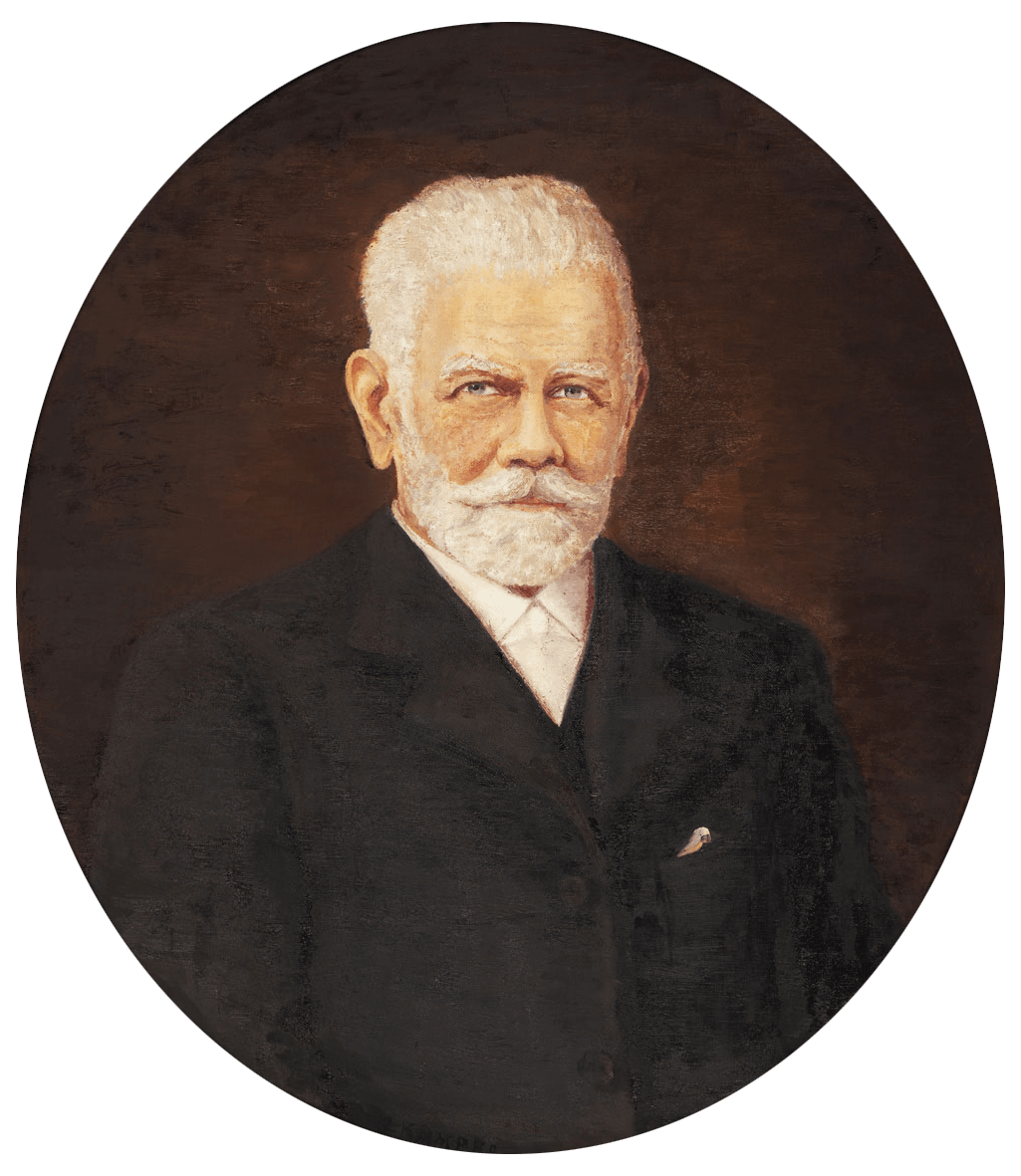
Ludwig Bösendorfer, heir to the Bösendorfer piano company
Having outgrown their original home, in 1870 Bösendorfer bought the building at Graf-Starhemberggasse 14 in the Fourth District of Vienna. Meanwhile, the offices and the showrooms were relocated into the heart of Vienna's centre, the Palais Liechtenstein in the Herrengasse 6. From its humble beginnings as a riding stable, the refurbished Palais Liechtenstein offered remarkable acoustic properties - something Ludwig was keen to make use of.
On November 19th, 1872, Hans von Bülow, son-in-law of Liszt, performed at Bösendorfer's Palais Liechtenstein, inaugurating the new 'Bösendorfer Hall' at the piano maker's new headquarters. Over the next 40 years, an astonishing 4000 or so piano and chamber music concerts and recitals followed. The names of the artists who performed reads like a Who's Who of leading pianists of the late 19th and early 20th Centuries.
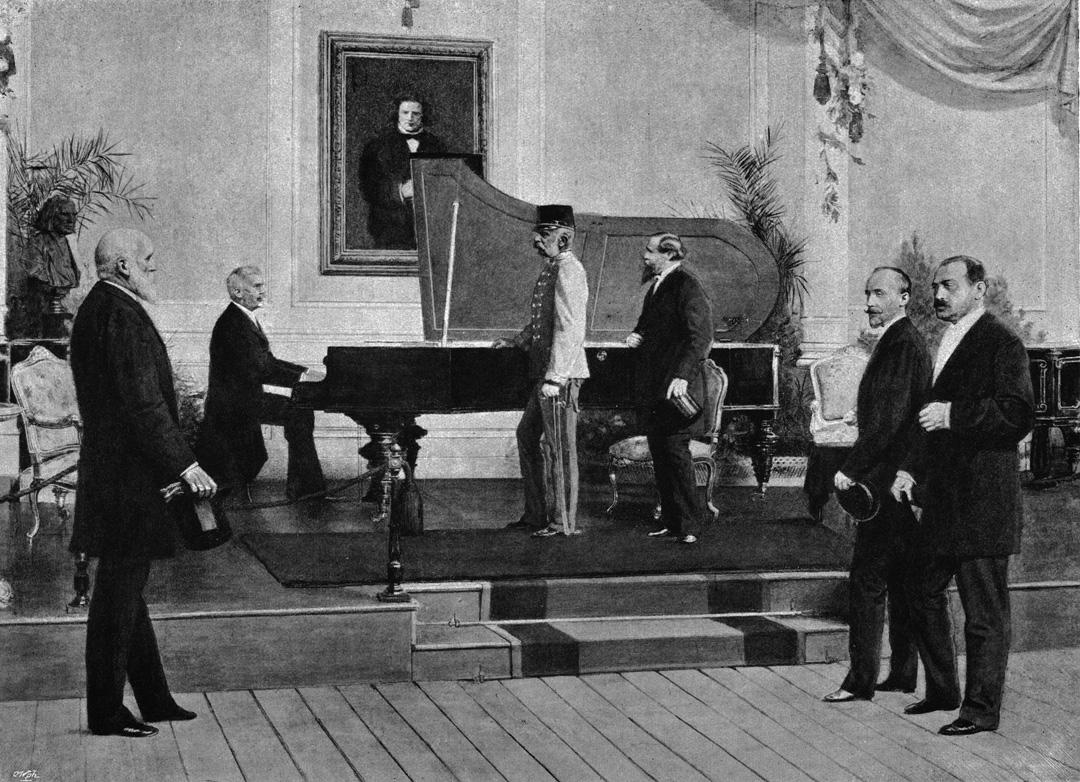
Ludwig demonstrates a Bösendorfer Grand to Emporer Franz Josef I of Austria
Perhaps as Ludwig intended, Bösendorfer Hall quickly moved beyond its role in demonstrating Bösendorfer pianos - it became a focal point of music and art, catalysing the development of new artists and fusions of ideas with the Bösendorfer company actively fostering creativity and performance.
By 1833, Bösendorfer's production had increased to 288 pianos per annum and the range was attracting attention not only of the nobility, emperors and the European elite but of artists as well. Johannes Brahms insisted on Bösendorfer during his summer performances, Johann Strauss bought a Bösendorfer Grand for his apartment in Vienna in Praterstraße and Gustav Mahler was supported by Bösendorfer during his student years in Vienna.
Always pushing for innovation in piano design, Ludwig and technical director Franz Berger made numerous improvements and inventions for the traditional Viennese piano action over the years. Knowing Bösendorfer's willingness to try new designs, in around 1900 Italian composer Ferruccio Busoni made a special request to Bösendorfer. Busoni was in the process of transcribing for piano JS Bach's seminal organ works. In doing so, he found that a normal piano didn't quite have the pitch-range required to fully realise Bach's works - could Bösendorfer solve this problem?
As most piano makers had discovered, making a piano play notes higher or lower than the normal 88 note range isn't as simple as just adding keys and strings; for those notes to have the depth and richness expected required extensive understanding of how the piano forms and shapes its tone. Ludwig and his Bösendorfer artisans proved up to the challenge; the result was the Bösendorfer Concert Grand 290 (which later become known as the Imperial. The new piano's tonal range of a full 8 octaves allowed for the additional bass required and produced an almost orchestral sound experience - exactly as Busoni wanted. Through innovation and continuous research, development and testing, Ludwig Bösendorfer ensured that creative engineering and the highest levels of craftsmanship were engrained at the heart of the Bösendorfer company. Today, the Bösendorfer name is synonymous with perfection, detail and acoustic experience.
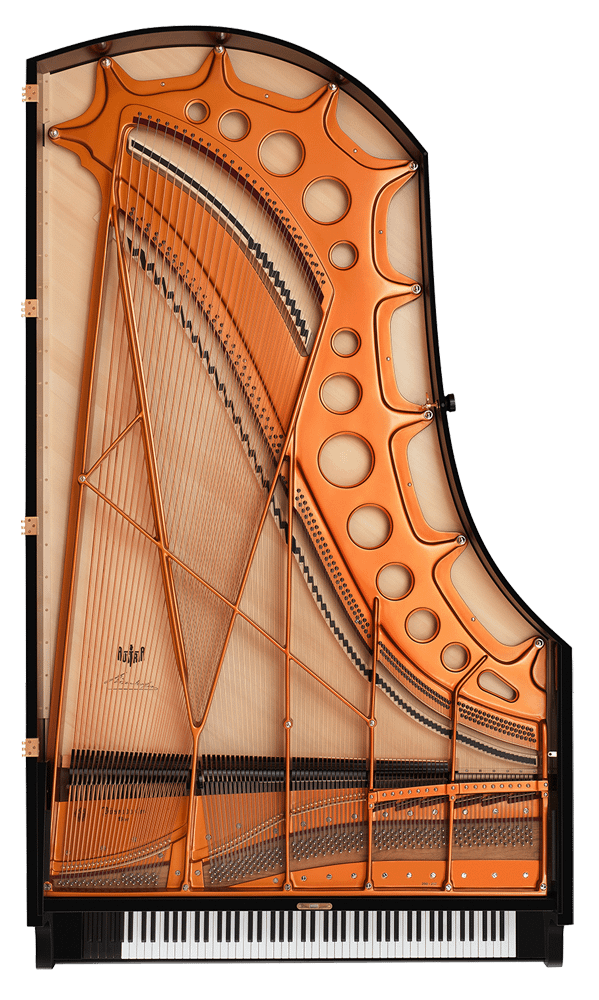
The flagship of the Bösendorfer range: The Concert Grand 290 Imperial
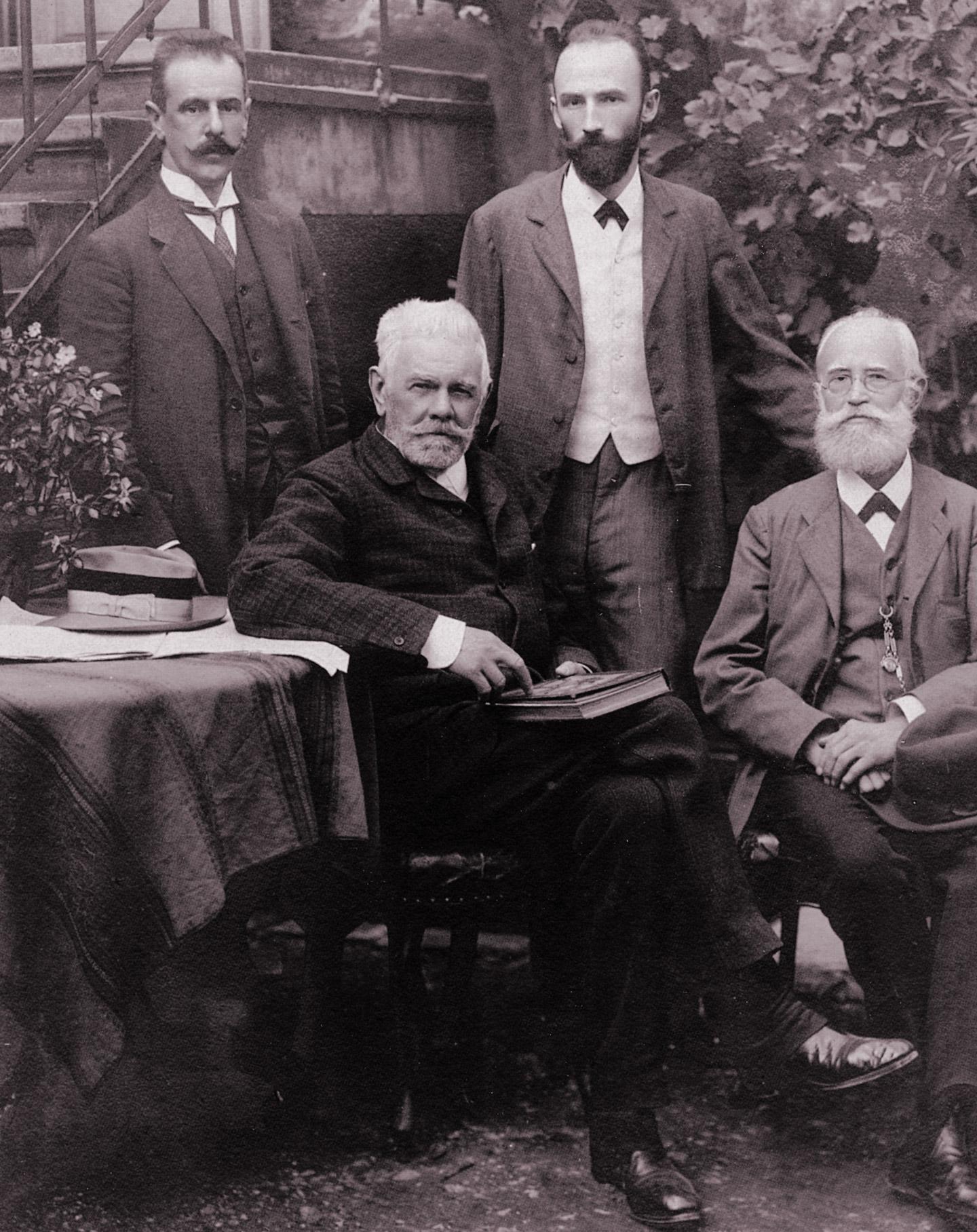
Photo showing Ludwig Bösendorfer, technical director Franz Berger, Berger's son Carl Georg (middle) and Ludwig's successor, Carl Hutterstrasser (standing, left)
Although married twice, Ludwig had no children or natural heir. At the age of 74 and having far, far exceeded his father's dreams for the small Viennese piano maker, Ludwig sold the Bösendorfer firm in 1909 to friend Carl Hutterstrasser. A banker by trade, Hutterstrasser knew little of the technical intricacies of piano building but understood and shared Ludwig’s drive and determination to maintain the highest possible quality of Bösendorfer pianos.
On 9th May, 1919 at the age of 84, Ludwig Bösendorfer passed away. Abiding by his wish to be laid to rest in a simple fashion, Ludwig's grave is marked only with his name and the years of his birth and death. In keeping with Ludwig's contribution to Viennese music during his lifetime, Ludwig dedicated the majority of his remaining private wealth to the Society of the Viennese Friends of Music on his death. Years later, a more fitting grave monument from the City of Vienna was put up in Ludwig's honour.
Carl Hutterstrasser's tenure as Bösendorfer's owner was punctuated by deep political unrest across Europe, including the two most devastating wars in human history. Work at the Bösendorfer piano factory continued nonetheless and, in 1927, Bösendorfer won the Grand Prix in Geneva where the company exhibited a Bösendorfer Concert Grand as well as a Grand Upright.
In 1931, Hutterstrasser's sons Wolfgang and Alexander become business partners with their father. Through in-depth apprenticeships at their father's firm and with additional education abroad, both Wolfgang and Alexander had become very capable piano artisans in their own right. Continuing Ludwig's legacy, both were well-connected to Viennese cultural institutions, artists and events which further solidified Bösendorfer's place in Vienna's music societies.
Harder times would follow. Following the economic crisis of the 1930s, demand, if not desire, for Bösendorfer pianos declined dramatically falling to just just 52 pianos in 1933. Following success in the BBC's piano competition in 1936, demand rose to 144 instruments.
In 1942, at the age of 80 and in the midst of World War II, Carl Hutterstrasser passed away, leaving both of his sons in charge of the Bösendorfer firm. Shortly afterwards, the company’s timber yard - vital to piano production - was hit by air strikes and almost destroyed. Later, when allied forces entered and occupied Vienna, soldiers used pianos displayed in the Bösendorfer showroom at the Musikverein for essential firewood.
In 1953, having rebuilt and with production rates gradually recovering, Bösendorfer celebrated its 125th anniversary, marked by world renowned pianist Wilhelm Backhaus receiving the Bösendorfer Ring for his dedication and contribution to the piano world.
By 1966, post-war Europe was enjoying a period of prosperity. Bösendorfer benefitted, with production having recovered to 100 pianos per year. The rise of television and increased affordability of radio receivers allowed the sights and sounds of Vienna - including the Bösendorfer name - to be heard across the world. Global demand increased and Bösendorfer were exporting pianos to almost every continent by the late 1960s.
With their piano company increasing in value, Alexander and Wolfgang Hutterstrasser made the difficult decision to sell and, on 1st July 1966, ownership of Bösendorfer transferred to US firm Kimball International, a business based in Jasper, Indiana.
In 1978, Bösendorfer celebrated its 150th anniversary with a gala concert performed by the Vienna Philharmonic Orchestra conducted by Horst Stein in the Golden Hall of the Musikverein. Marking the occasion, virtuoso pianist Paul Badura-Skoda was awarded the Bösendorfer Ring, and pianists Gerhard Oppitz, Jörg Demus, Alexander Jenner and Walter Klien all performed in celebration of Bösendorfer's milestone.
Mindful of the heritage and cultural responsibility that accompanied its purchase, Kimball ensured that Bösendorfer continued its tradition of promoting young aspiring artists. The Bösendorfer scholarship was established, offered annually to the best piano scholars and performers, and Bösendorfer supported the International Beethoven Competition with a donation of a Model 200 Grand for the 1st prize. Having begun more than a century earlier, the famous Bösendorfer Competition for students at the Vienna Music University continues to be supported by Kimball and Bösendorfer.
With increasing demand for their pianos, in 1973 the Bösendorfer company relocates for the second time in its long history - from Graf Starhemberg Gasse to Wiener Neustadt, a small town in close proximity to Vienna. The same year, Bösendorfer made a truly unique piano - the Concert Grand Opus 30,000. Chosen by Federal Chancellor Dr. Bruno Kreisky, the piano quickly shipped to its new home in Japan.
Success continued for Bösendorfer into the mid-1980s. Impressed by Yamaha's revolutionary 'Player Piano' in 1982 (laying the fundamental groundwork for the long-running Disklavier Series pianos), Bösendorfer were spurred into starting a whole new area of technological research and development.
In November 1986, just a few years after Yamaha's debut of the concept, Bösendorfer presented their first electronic Player Grand - a self playing Imperial 290 - at the Salzburg Festival. Offering revolutionary accuracy in performance capture and recreation, the Imperial 290 Player Grand immediately impressed.
In 2001, with Kimball looking to raise capital and offload assets, the Bösendorfer company was sold to Austrian investment banking group BAWAG-PSK. Whilst the acquisition brought Bösendorfer back to Austrian ownership for a just a few short years. Perhaps forecasting the extraordinary financial crisis that was looming in the US in late 2007, BAWAG-PSK sold Bösendorfer and Austrian broadcaster in January 2008 - just months later, the UK and Central Europe would be reeling from the all-encompassing effects of the crisis.
Having respected and admired our Austrian competitors for over a century, in 2008 Yamaha acquired the Bösendorfer company from BAWAG-PSK. However, conscious of the revered heritage and history Bösendorfer commands, Yamaha has ensured that the Austrian piano maker remains fully independent and continues to be operated as a separate Austrian company, with our experience, technology and global reach on hand to support when appropriate.
And so, as it was when Ignaz Bösendorfer first put his name to his pianos, all Bösendorfer Grands are exclusively handcrafted in the region of Vienna by the world's best piano artisans. Today, nearly 300 pianos are made by the company each year and all continue to delight and inspire those who play - and those who listen - to them.
"Calling Vienna our home, we have set out to develop a concert instrument for the 21st century which removes any obstacle between the artist and their imagination. What shall remain is pure, unleashed emotion. We have found what we have been looking for and developed our newest creation: VC – or Vienna Concert – technology. Through countless hours of hard, dedicated work and perseverance we elaborated on the Viennese tradition of piano crafting and designed the Concert Grand 280VC and the Grand Piano 214VC. Our new technological advances especially combine a breath-taking spectrum of colours, sensitive dynamic responsiveness and an impeccable action. All qualities master pianists are looking for in a grand piano.
"Our unconditional commitment to the Art of Piano you will sense at the very touch of our instruments. An impression that will last and inspire more than one generation: the unique Sound of a Bösendorfer Grand.
"Music - without any doubt - is one of the few languages that does not rely on any translation. Immediately understood by the human soul it captivates moments of unity. It is an honour to dedicate ourselves to this very human element of life."
Mag.FH Sabine Grubmüller
Bösendorfer Managing Director